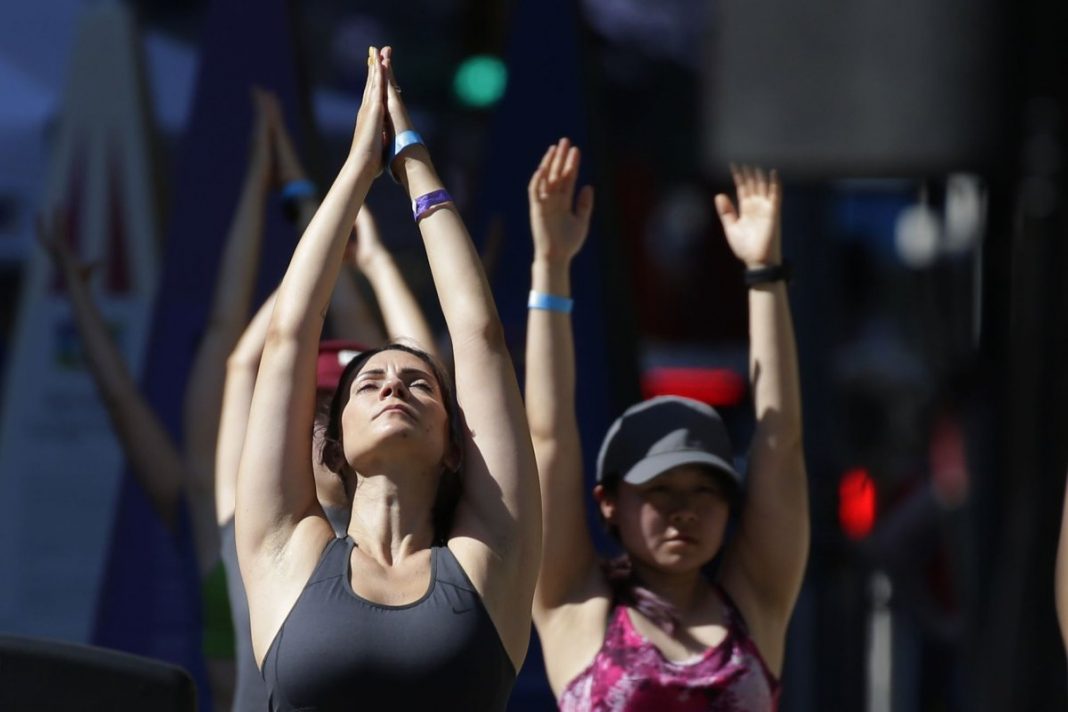Dec. 15 (UPI) — People who were more physically active before being diagnosed with COVID-19 — even those with chronic illness — had a lower risk of severe outcomes, according to a large-scale study of Kaiser Permanente plan members.
The managed care system’s research findings were published Thursday in the American Journal of Preventive Medicine.
“The results of this study document substantially higher odds of hospitalization, deterioration events and death with lower amounts of self-reported physical activity,” the research paper says.
People “who were consistently inactive were 191% more likely to be hospitalized and 391% more likely to die than those who were consistently active,” the researchers said.
Moreover, the higher odds of severe COVID-19 outcomes among physically inactive people were generally consistent across “all racial and ethnic categories, in most age categories, in all BMI [body mass index] categories, and for patients with and without diagnoses of cardiovascular disease or hypertension.”
“The main message is that every little bit of physical activity counts. The more exercise the better, no matter a person’s race, ethnicity, age, sex, or chronic conditions,” Deborah Rohm Young, the study’s lead author, said in a news release.
Young is director of the Division of Behavioral Research for the Kaiser Permanente Southern California Department of Research & Evaluation.
Young cited the need to view physical activity as a “pandemic-mitigation strategy,” and said the study “provides new evidence to inform appropriate interventions across demographic groups.”
Although evidence is building on the benefits of physical activity for less severe COVID-19 outcomes, knowledge gaps remain, the researchers said.
People who were more physically active before infection “may have a lower prevalence of underlying chronic conditions that predispose to adverse outcomes,” they said.
Also, previous studies haven’t identified whether more physical activity is associated with less severe outcomes for people who have chronic health conditions or whether exercise makes a difference across demographic groups.
And this is especially important, the scientists said, because “sociodemographic inequities in COVID-19 case rates and outcomes are central concerns in pandemic control.”
Young and her colleagues analyzed the electronic health records of 194,191 adult patients at Kaiser Permanente in Southern California who were diagnosed with COVID-19 between January 2020 and May 2021, before widespread COVID-19 vaccination.
Six in 10 participants were Hispanic. Over half had BMIs of at least 30, whereas a BMI of 18.5 to 24.9 is considered healthy. Of the total, 21.8% had a diagnosis of hypertension and 9.2% had a diagnosis of cardiovascular disease.
Over the study period, due to COVID-19, 6.3% of the patients were hospitalized, 3.1% experienced a “deterioration event,” and 2.8% died within 90 days of infection, the researchers said.
Patients had reported their physical activity levels prior to infection in a routine measure, known as the Exercise Vital Sign. Using this information, each person was placed into one of five categories that ranged from “always inactive” — defined as 10 minutes of exercise or less per week, to “always active” at 150 minutes of exercise weekly.
The researchers’ analysis indicated that the more physical activity a patient reported, the lower their risk of hospitalization or death within 90 days of COVID-19 diagnosis.
The always-active patients faced the lowest risk.
In addition, more exercise was linked to lower rates of hospitalization or death for people with certain underlying chronic conditions that are typically linked to a higher risk of poor COVID-19 outcomes.
“Our findings drive home the need for physicians to emphasize to their patients that getting vaccinated and being more physically active are two of the most important things you can do to prevent severe outcomes of COVID-19,” Dr. Robert E. Sallis, the study’s senior author and a family and sports medicine physician at the Kaiser Permanente Fontana Medical Center in San Bernardino County, Calif., said in the release.

